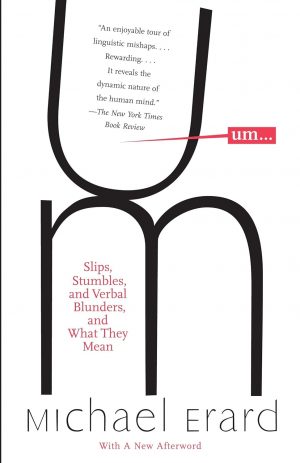Here it is: our second and final set of mini-stories for the season, cooked up in advance of the holidays with finishing touches added after the new year. We’ll be covering upside-down construction, the linguistics of filler and a fire that has been burning for decades.
Top-Down Construction with Kurt Kohlstedt
On our show and in our book, we’ve covered top-down deconstruction, but going in reverse isn’t limited to unbuilding things. Exchange, a building in Detroit, was erected by raising two core pillars first, then constructing each floor on the ground before raising it to the top — starting, of course, with the top level.
Basically, heavy-duty hydraulic lifts — the kind used to move around massive things like oil rigs — are employed to raise each floor into place. By the time it’s in the air, most of a given level is finished, needing only to be connected to the one above it at key points.
There are challenges to doing things this way, but also benefits. By doing most of the work on the ground, work sites can occupy less space on all sides (no room needed for big cranes to lift things into place). And by sealing off levels before they’re up high, adding layers of safety for workers while floors are in progress is less of a factor.
Filler Words with Joe Rosenberg
 Filler words or fillers, as they’re often called in linguistics, are things like … kind of, you know, basically, I mean, and of course your classic ums and ahs. When we hear someone else use them, we might criticize the speaker — at least internally — but according to linguists like Nick Enfield and Michael Erard, filler words are not, in fact, something to be ashamed of using; we’re not being idiots, or at least not entirely. Instead, filler words actually serve an important function, by helping us shape conversation.
Filler words or fillers, as they’re often called in linguistics, are things like … kind of, you know, basically, I mean, and of course your classic ums and ahs. When we hear someone else use them, we might criticize the speaker — at least internally — but according to linguists like Nick Enfield and Michael Erard, filler words are not, in fact, something to be ashamed of using; we’re not being idiots, or at least not entirely. Instead, filler words actually serve an important function, by helping us shape conversation.
In using these kinds of words and phrases, we signal to others in a conversation about where we’re headed — they might let us set the tone, for instance, for an abrupt or unexpected change in emotive content. We can also use them to reserve space, indicating that we’re not finished with our thought yet.
 Not only are filler words found in all spoken languages, they also appear in sign languages as well, suggesting that they’re not just tics of how we talk, but integral to how we generate speech.
Not only are filler words found in all spoken languages, they also appear in sign languages as well, suggesting that they’re not just tics of how we talk, but integral to how we generate speech.
Of course, filler words can work well when we’re in dialogue with one another, but can be annoying when we’re listening to, say, a podcast — which might be explained in part because our role is different: we’re passively listening rather than actively talking, meaning the filler words no longer carry useful information for us, causing them to stand out and making the talker appear confused. And so podcast editors might, without you even realize it, be filtering some of the filler words out of any given story, including this one. To learn more about filler words and language disfluency, be sure to check out Nick Enfield’s book How We Talk: The Inner Workings of Conversation, and Michael Erard’s Um…: Slips, Stumbles, and Verbal Blunders, and What They Mean.
Centralia with Lizzie No
 Centralia, the song by Lizzie No, is based on a true story about a coal mine fire that broke out in Centralia, Pennsylvania, way back in 1962. No one knows for sure what caused the fire, but what started on May 27th spread through miles and miles of coal mining tunnels underneath the town. The place has been a Mecca of sorts for fans of abandoned places ever since, as well as in the inspiration for various expressive works, including:
Centralia, the song by Lizzie No, is based on a true story about a coal mine fire that broke out in Centralia, Pennsylvania, way back in 1962. No one knows for sure what caused the fire, but what started on May 27th spread through miles and miles of coal mining tunnels underneath the town. The place has been a Mecca of sorts for fans of abandoned places ever since, as well as in the inspiration for various expressive works, including:
As Lizzie explains: “there is a lot of compressed carbon down there, because of the coal, so the fire was never able to be extinguished. Scientists think that it could continue to burn for another 250 years.”
 Perhaps the most surreal secondary effect of this slow-burning disaster: smoke has been known to billow up from cracks in the Earth, conjuring up images of Hell bleeding out onto our mortal coil.
Perhaps the most surreal secondary effect of this slow-burning disaster: smoke has been known to billow up from cracks in the Earth, conjuring up images of Hell bleeding out onto our mortal coil.
And the fire itself isn’t the only problem — all that underground damage has sinkholes to appear throughout the city and rendered it effectively uninhabitable. There are stories of people’s pets, and even people falling in. The population quickly dropped from around 1,500 at its peak to only about five residents that are left.
If there’s a silver lining, it might be this: in the absence of humans, other animals tend to thrive — like demilitarized zones around the world, this place may not be hospitable to our species but is an increasingly attractive habitat for others.
Special thanks to Lizzie No for joining us to talk about this strange and amazing place. Her latest album, Halfsies, is out now!
More about the artist: “With the release of her debut album, ‘Hard Won,’ in March 2017, singer-songwriter, harpist, and guitarist Lizzie No established herself as one of the most exciting new voices in indie folk music. Billboard Magazine called the album “simultaneously understated and fervent.” She followed up the album with the release of “Sundown,” a benefit track for Black Lives Matter.” Check out Lizzie No‘s latest album on Band Camp.
Thanks for joining us as always for our year-wrapping mini-stories. Like this format? Check our archives for seventeen more that came before!





Leave a Comment
Share